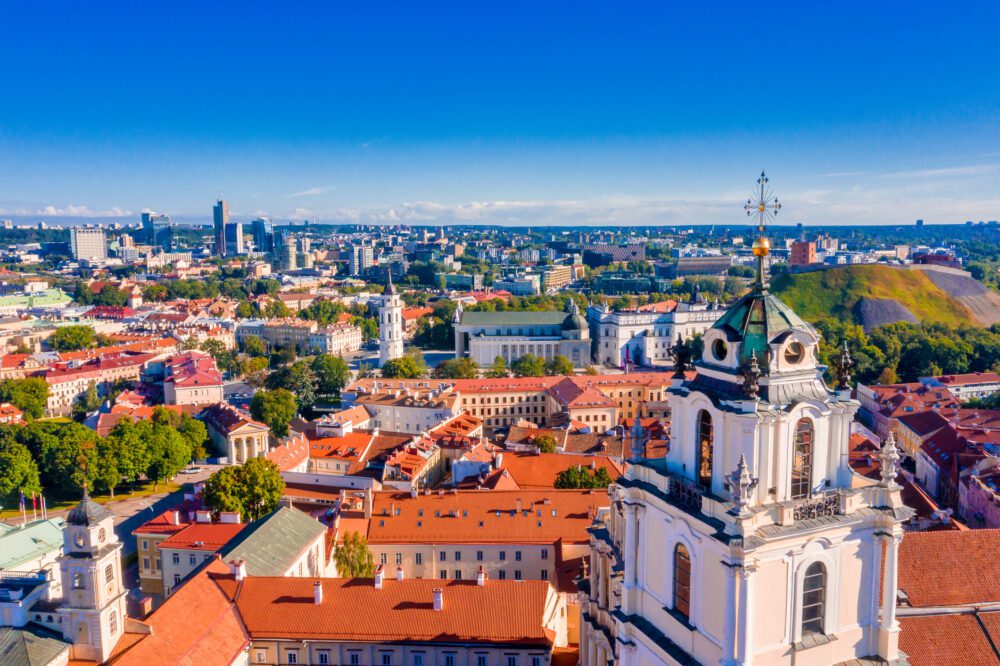
Introduction
Welcome to the ultimate guide to Vilnius, Lithuania’s vibrant and culturally rich capital, where every cobblestone street tells a story and every corner reveals a hidden gem. Whether you’re a seasoned traveller or a curious adventurer, Vilnius offers an array of experiences that cater to every taste and preference. From exploring the UNESCO-listed Old Town, with its Gothic architecture and quaint cafes, to delving into the city’s thriving art scene and indulging in its delicious culinary delights, Vilnius has something for everyone. Join me on a journey through this charming city as we uncover the best things to see, do, and taste in Vilnius, ensuring an unforgettable experience in the heart of the Baltic.
Prepare to be enchanted by Vilnius’ rich history, where medieval charm seamlessly blends with contemporary culture. Lose yourself in the labyrinthine streets of the Old Town, where each alleyway holds a treasure waiting to be discovered. Ascend to the dizzying heights of Gediminas Castle for panoramic views of the city, or immerse yourself in the solemn beauty of the Hill of Crosses. For those seeking a taste of local life, delve into Vilnius’ bustling markets, where the aromas of freshly baked bread and smoked meats fill the air. Whether you’re drawn to history, art, or gastronomy, Vilnius promises an unforgettable experience that will leave you longing to return again and again.
Table of Contents
Map of the Best Things to Do in Vilnius
Vilnius Old Town
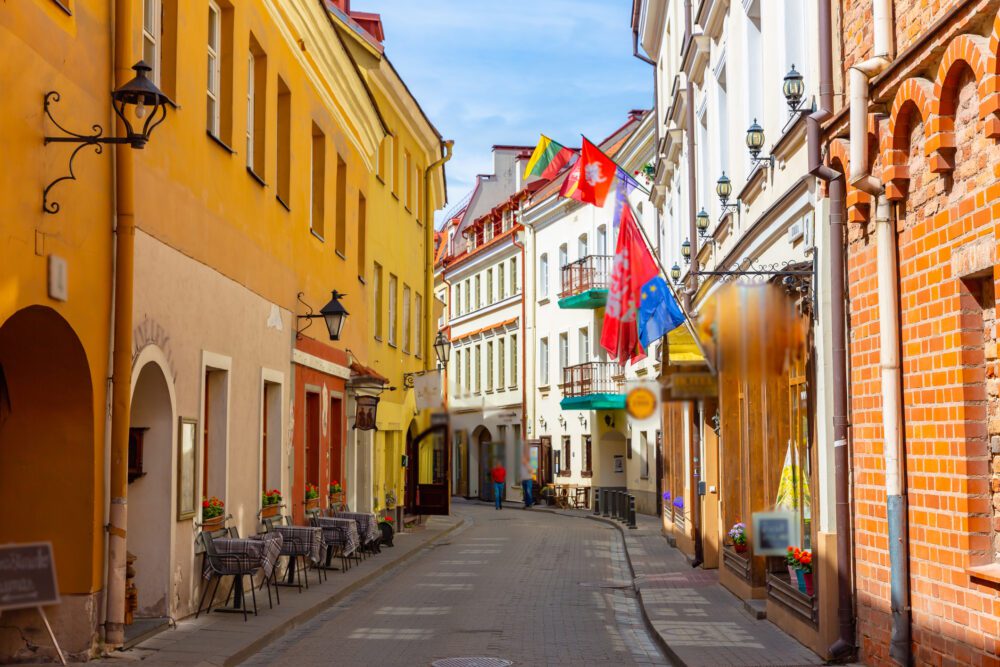
Step back in time as you wander through the cobblestone streets of Vilnius Old Town, a UNESCO World Heritage Site boasting centuries of history and culture. Marvel at the intricate facades of St. Anne’s Church and the imposing beauty of Vilnius Cathedral, each a testament to the city’s rich architectural heritage. Don’t miss the chance to explore the narrow alleyways and hidden courtyards, where you’ll stumble upon charming boutiques, artisan workshops, and cosy cafes serving up traditional Lithuanian fare. For an immersive experience, consider joining a guided walking tour to uncover the secrets and stories of this enchanting neighbourhood, or simply meander at your own pace, soaking in the atmosphere of this living museum.
When planning your visit to Vilnius Old Town, be sure to wear comfortable shoes as you’ll be doing plenty of walking on uneven terrain. To beat the crowds, consider starting your day early or exploring in the evening when the streets are quieter and the historic buildings are bathed in soft golden light. For a unique perspective of the city, climb to the top of the Bell Tower for panoramic views, or embark on a hot air balloon ride for a bird’s-eye view of the Old Town’s red rooftops and winding streets. Finally, don’t forget to sample some of the local delicacies, from hearty cepelinai (potato dumplings) to decadent šakotis (tree cake), at one of the many charming restaurants dotted throughout the neighbourhood.
Gate of Dawn
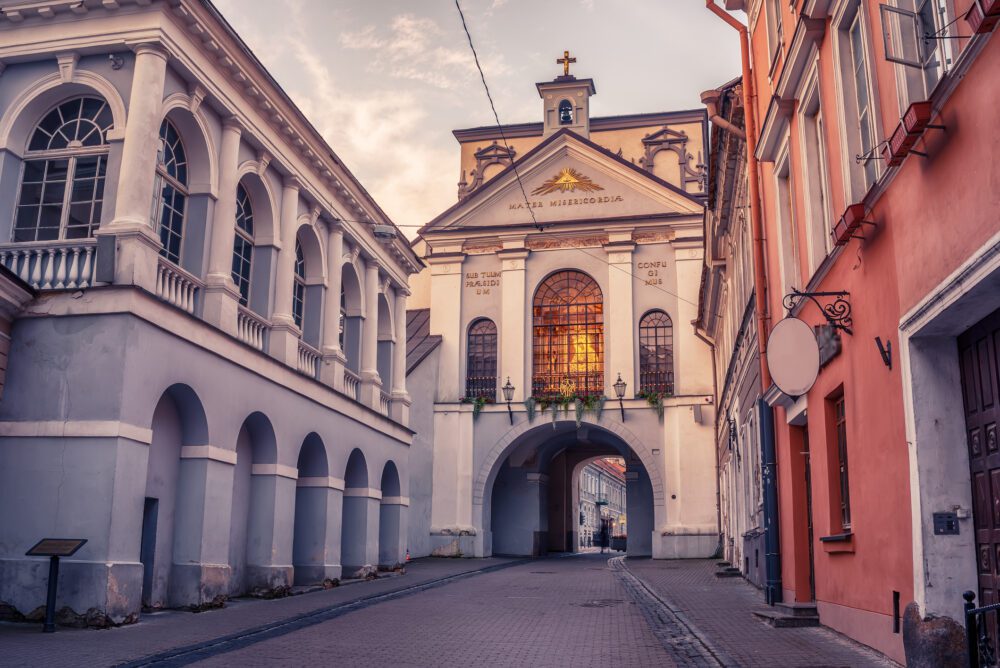
No visit to Vilnius Old Town would be complete without a pilgrimage to the iconic Gate of Dawn, a historic gateway that has stood as a symbol of faith and resilience for centuries. Built in the 16th century as part of the city’s defensive fortifications, the Gate of Dawn is home to the Chapel of the Blessed Virgin Mary, where a miraculous icon of the Virgin Mary is enshrined. This revered icon, known as the Vilnius Madonna or the Mother of Mercy, attracts pilgrims from around the world who come to pay their respects and seek blessings. As you approach the gate, take a moment to admire its elegant Renaissance architecture and ornate decorations, including statues of saints and angels that adorn its facade, before stepping inside to experience the tranquillity and reverence of the chapel.
Practical tip: Plan your visit to the Gate of Dawn in the morning or late afternoon to avoid the crowds, especially during peak tourist season. Consider joining a guided tour to gain insights into the history and significance of this sacred site, or simply take your time to explore at your own pace. After visiting the chapel, take a leisurely stroll along the city walls for panoramic views of Vilnius Old Town, or wander through the nearby Bernardine Gardens for a moment of peace and reflection. Before you leave, don’t forget to pick up a souvenir or memento from one of the charming shops and stalls that line the streets surrounding the gate, offering everything from religious artefacts to handmade crafts.
Museum of Illusions
For a fascinating blend of entertainment and enlightenment, venture beyond Vilnius’ historic streets to explore the Museum of Illusions. Located in the heart of the city, this interactive museum offers a mind-bending journey into the world of optical illusions, puzzles, and sensory experiences. Step inside and prepare to have your perceptions challenged as you encounter a variety of exhibits that play tricks on the mind and defy logic. From holograms and infinity rooms to gravity-defying installations, each display invites visitors to explore the fascinating intersection of science and art. Whether you’re young or young at heart, the Museum of Illusions promises an immersive and unforgettable experience that will leave you questioning reality long after you’ve left its halls.
Purchase your tickets online in advance to skip the line and guarantee entry, especially during peak hours and weekends when the museum tends to be busiest. Allow yourself plenty of time to explore each exhibit thoroughly, as there are plenty of opportunities for interactive fun and photo-worthy moments. Be sure to bring a camera or smartphone to capture your favourite illusions and share them with friends and family.
Vilnius University
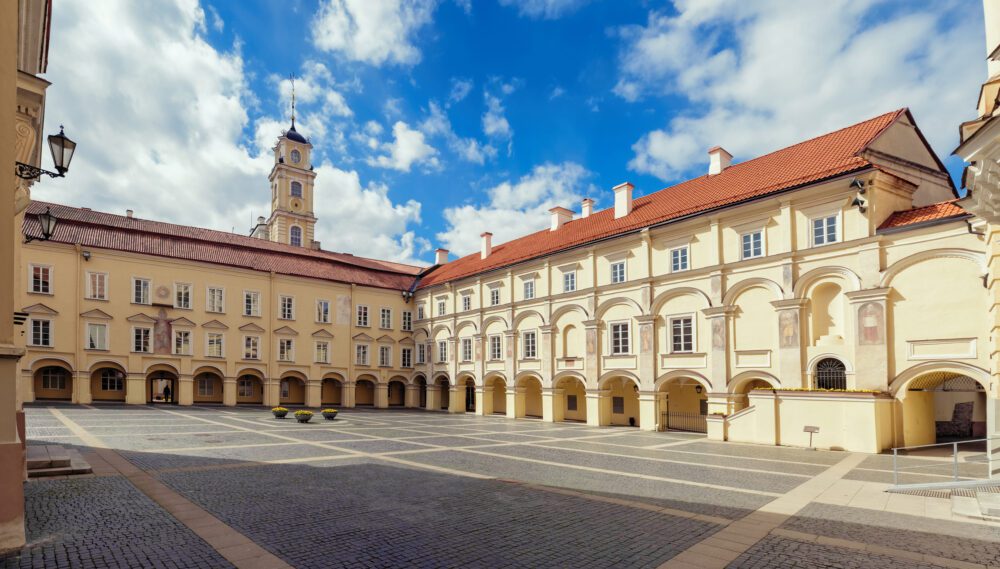
Nestled within the heart of Vilnius Old Town lies the prestigious Vilnius University, a venerable institution that traces its roots back to the 16th century. Founded in 1579 by King Stephen Báthory of Poland and the Grand Duke of Lithuania, the university has played a pivotal role in the intellectual and cultural development of Lithuania and Eastern Europe. Wander through its hallowed halls and courtyards, and you’ll find yourself immersed in history, surrounded by stunning architecture that spans centuries of academic tradition. Marvel at the grandeur of the Great Hall, where generations of scholars have gathered for lectures and ceremonies, or explore the university’s numerous libraries and museums, which house rare manuscripts, artefacts, and works of art.
While some areas of Vilnius University are open to the public, including its courtyards and certain museums, access to academic buildings and facilities may be restricted. Consider joining a guided tour to gain access to areas not typically open to visitors and to learn more about the university’s fascinating history and culture. Keep in mind that Vilnius University is still a working academic institution, so be mindful of students and faculty as you explore the campus. After your visit, take a leisurely stroll through the university district, where you’ll find charming cafes, bookstores, and galleries tucked away in historic buildings.
Free Republic of Uzupis
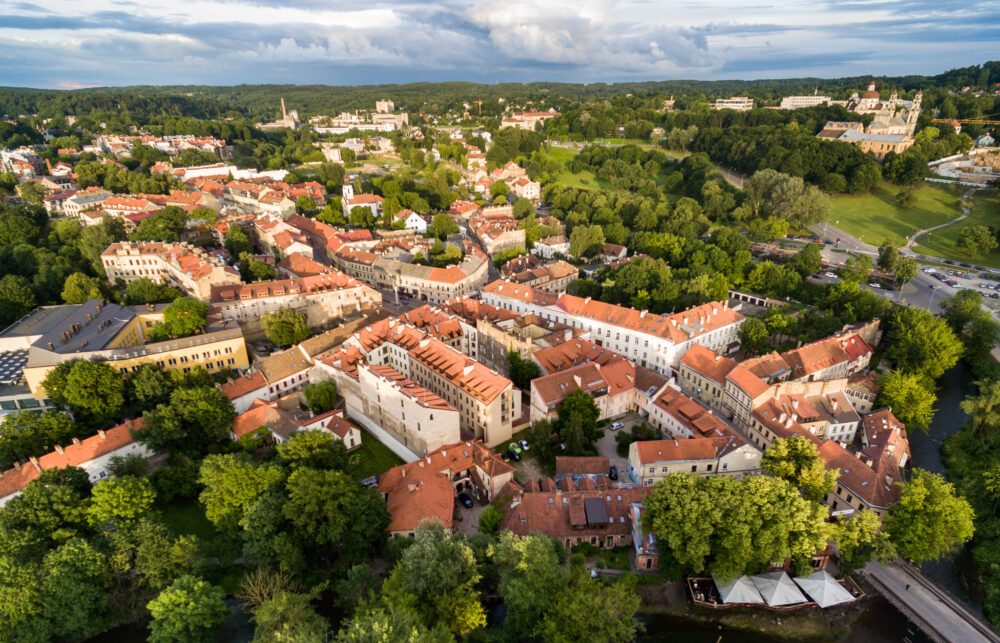
Tucked away on the banks of the Vilnia River lies Užupis, Vilnius’ bohemian enclave and self-proclaimed “Republic of Užupis.” Founded in 1997 by a group of local artists and activists, this quirky neighbourhood has since become a haven for creative expression and alternative lifestyles. Wander through its winding streets adorned with colourful street art and whimsical sculptures, and you’ll discover a vibrant community where freedom, creativity, and independence are celebrated. Take a moment to pause at the Užupis Constitution, a tongue-in-cheek declaration of the neighbourhood’s values, which includes the right to be happy, the right to be unhappy, and the right to be misunderstood.
Užupis is best explored on foot, so be sure to wear comfortable shoes as you navigate its hilly terrain and narrow cobblestone streets. Spend some time browsing the eclectic shops and galleries that line the streets, where you’ll find unique souvenirs, handmade crafts, and local artwork. For a taste of Užupis’ laid-back vibe, relax at one of its charming cafes or beer gardens, where you can enjoy a leisurely meal or a refreshing drink while soaking in the bohemian atmosphere. Don’t miss the chance to visit the Užupis Art Incubator, a community space where local artists showcase their work and host exhibitions, workshops, and performances.
St Anne’s Church
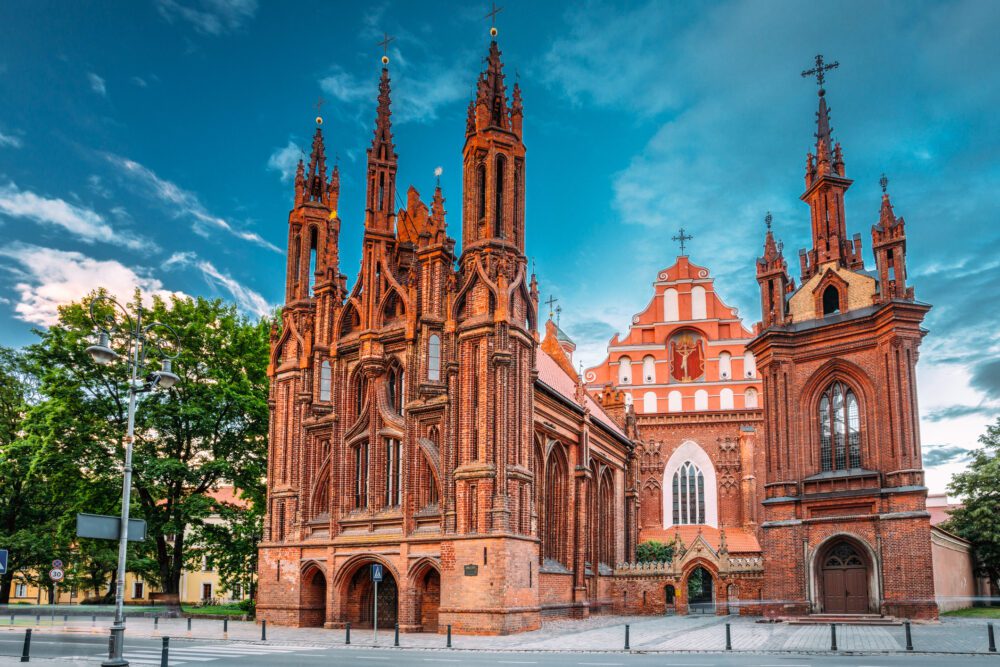
Standing as a testament to Gothic architecture in Vilnius, St. Anne’s Church is a jewel in the city’s crown, its striking facade adorned with intricate brickwork that has captured the imagination of visitors for centuries. Built in the late 15th century, this architectural masterpiece is renowned for its soaring spires and delicate embellishments, making it one of the most photographed landmarks in Vilnius. Legend has it that when Napoleon Bonaparte saw St. Anne’s Church during his campaign in Vilnius in 1812, he was so captivated by its beauty that he wanted to carry it back to Paris “in the palm of his hand.”
Practical tip: When visiting St. Anne’s Church, be sure to check the opening hours as they may vary, especially during religious services and events. Consider joining a guided tour to gain insights into the history and significance of this iconic landmark, or simply take your time to admire its breathtaking architecture from the outside. For the best photo opportunities, visit St. Anne’s Church in the early morning or late afternoon when the light is soft and golden, casting a warm glow upon its facades. After exploring the church, take a leisurely stroll through the surrounding Bernardine Gardens, where you can enjoy scenic views of Vilnius Old Town and relax amidst lush greenery.
Vilnius Cathedral
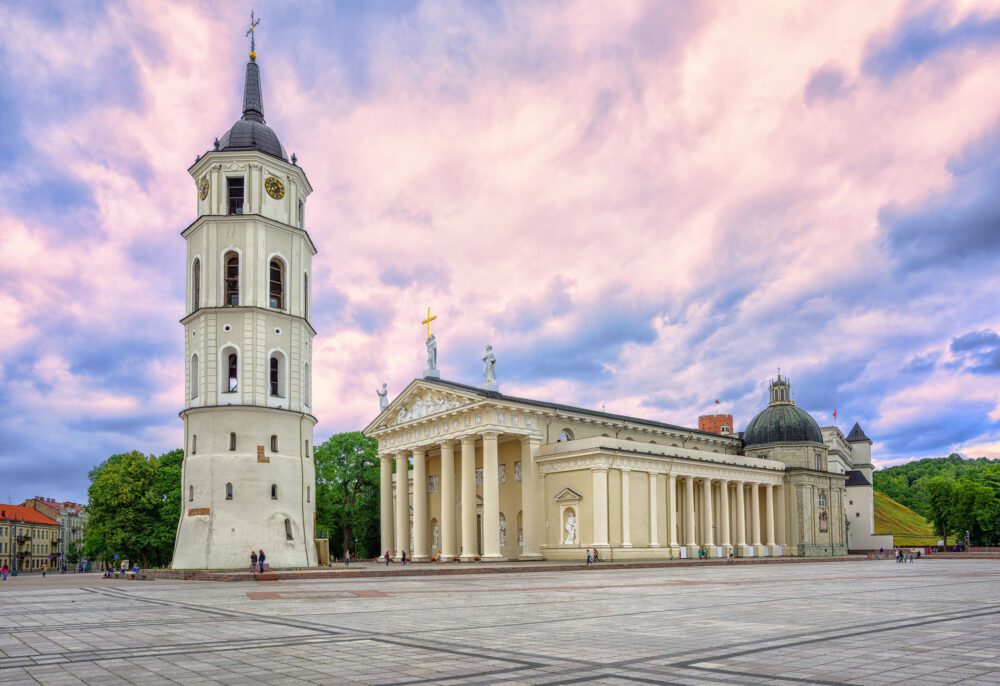
At the heart of Vilnius Old Town stands Vilnius Cathedral, a symbol of Lithuania’s enduring faith and cultural heritage. Originally constructed in the 13th century, the cathedral has undergone numerous renovations and reconstructions over the centuries, reflecting a blend of architectural styles ranging from Gothic to Baroque. Its majestic neoclassical facade, adorned with towering columns and elegant statues, commands attention as visitors approach Cathedral Square. Inside, the cathedral’s soaring vaulted ceilings and ornate altars create a sense of awe and reverence, while its chapels and crypts house the tombs of prominent Lithuanian figures, including Grand Dukes and bishops.
Plan your visit to Vilnius Cathedral carefully, as it is an active place of worship and may be closed to visitors during religious services and ceremonies. Be sure to dress modestly and respectfully when entering the cathedral, covering your shoulders and knees out of respect for its religious significance. Consider joining a guided tour to learn more about the cathedral’s history and architecture, or explore at your own pace using audio guides available on-site. After visiting the cathedral, take some time to explore Cathedral Square, where you’ll find bustling markets, street performers, and outdoor cafes set against the backdrop of the cathedral’s grand facade.
Palace of the Grand Dukes of Lithuania
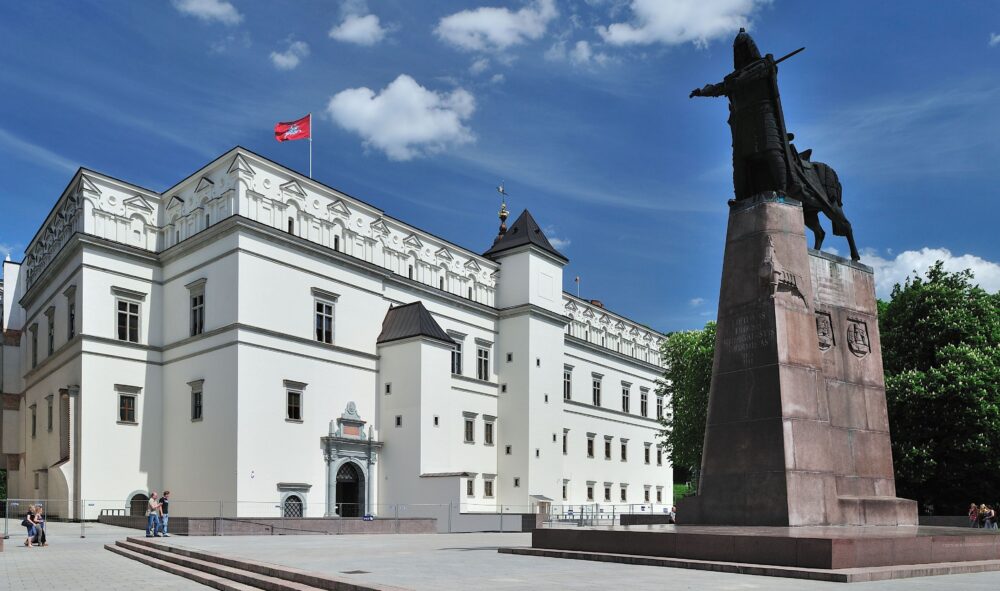
The Palace of the Grand Dukes of Lithuania stands as a testament to the grandeur and power of Lithuania’s medieval rulers, serving as the political and cultural centre of the Grand Duchy for centuries. Originally built in the 15th century, the palace underwent numerous expansions and renovations over the years, evolving from a wooden fortress to a magnificent Renaissance-style residence. Unfortunately, much of the palace was destroyed during the 19th century, but extensive archaeological excavations in the late 20th century led to its partial reconstruction, offering visitors a glimpse into Lithuania’s royal past. Today, the palace serves as a museum, showcasing artefacts and exhibits that illuminate the history and heritage of the Grand Duchy and its rulers.
When planning your visit to the Palace of the Grand Dukes, be sure to check the museum’s opening hours and any special exhibitions or events that may be taking place. Consider purchasing tickets in advance to avoid waiting in line, especially during peak tourist season. Take your time to explore the palace’s many rooms and galleries, which feature a wealth of historical artefacts, artwork, and interactive displays. For a deeper understanding of the palace’s significance, join a guided tour led by knowledgeable experts who can provide insights into its history and architecture. After your visit, take a stroll through the adjacent Cathedral Square or relax in the nearby Bernardine Gardens, where you can enjoy scenic views of Vilnius Old Town and reflect on the palace’s rich legacy.
Gediminas Castle Tower
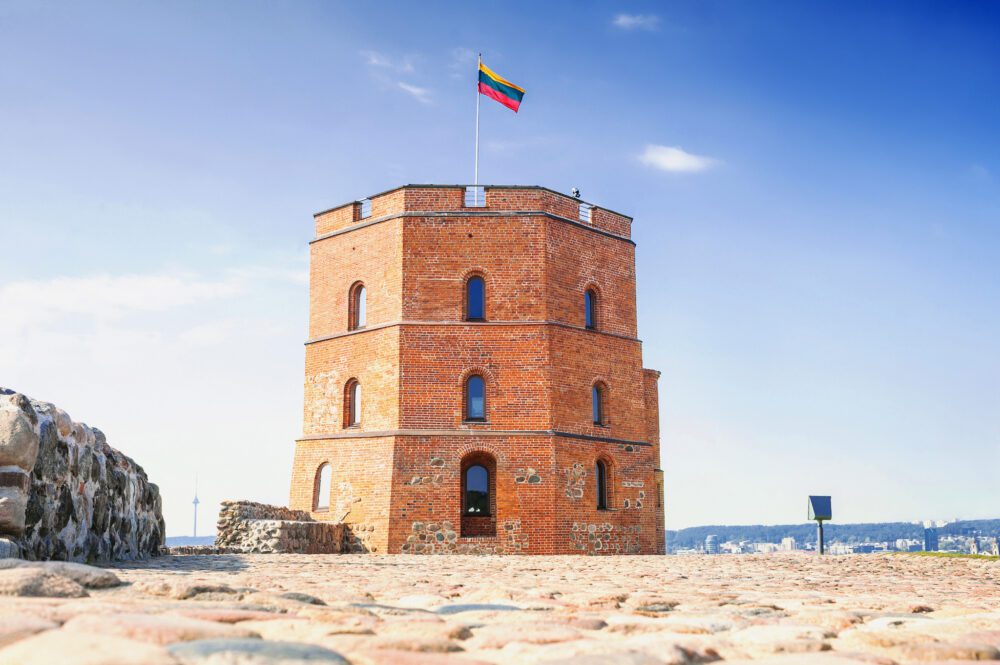
Perched atop a hill overlooking Vilnius Old Town, the Gediminas Castle Tower stands as a symbol of the city’s resilience and heritage. Named after Grand Duke Gediminas, who is credited with founding Vilnius in the 14th century, the castle served as a strategic fortification and residence for Lithuania’s rulers for centuries. While much of the original castle complex was destroyed over time, the Gediminas Castle Tower remains as a lone sentinel, offering panoramic views of the city below and the surrounding landscape. Visitors can climb to the top of the tower, where they’ll be rewarded with breathtaking vistas of Vilnius’ red rooftops, church spires, and lush greenery, providing a perfect vantage point for capturing memorable photos and soaking in the beauty of the Baltic.
To reach the Gediminas Castle Tower, you can either take a leisurely stroll up Castle Hill from Cathedral Square or opt for a funicular ride for a more scenic ascent. Be sure to wear sturdy shoes and comfortable clothing, as the climb can be steep in places. Consider visiting early in the morning or later in the afternoon to avoid the crowds and enjoy the peaceful ambience of the castle grounds. After exploring the tower, take some time to wander through the adjacent Upper Castle Archaeological Site, where you can learn about the history of the castle and admire the remnants of its medieval fortifications. Before you leave, be sure to visit the onsite museum, which features exhibits on the castle’s history and archaeological discoveries.
Hill of Three Crosses
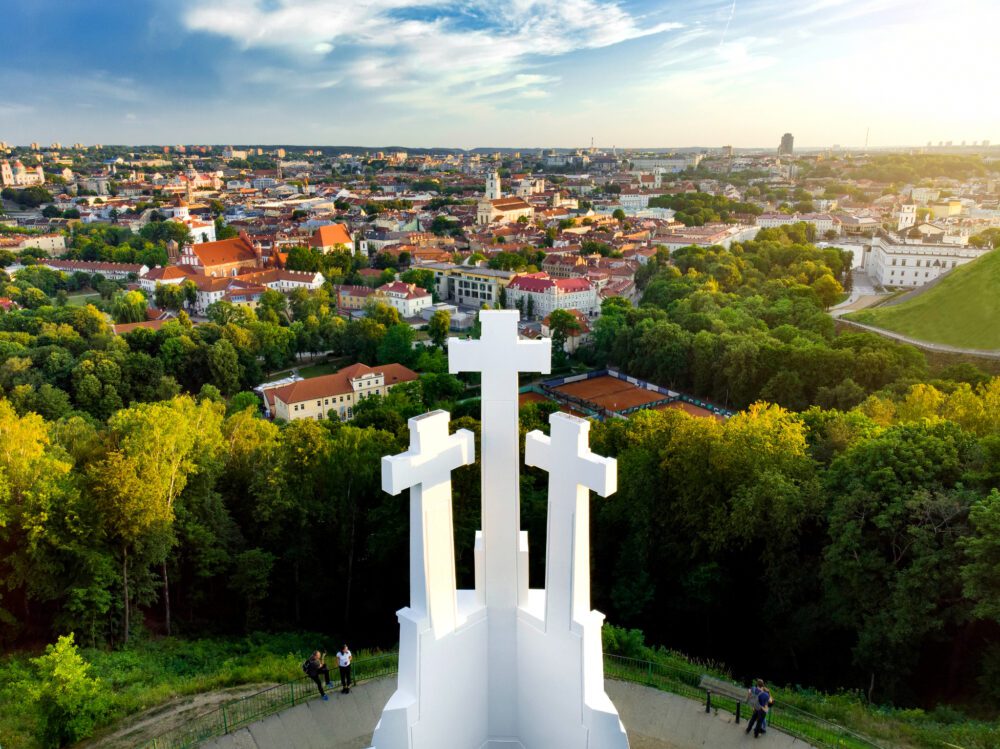
Nestled on the north bank of the Vilnia River, the Hill of Three Crosses is a poignant symbol of Vilnius’ resilience and faith. Legend has it that in the 17th century, three wooden crosses were erected on the hill to commemorate three Franciscan friars who were martyred for their faith. Over the centuries, the crosses have been destroyed and rebuilt multiple times, with the current structure dating back to the 20th century. Today, the Hill of Three Crosses offers visitors a serene retreat from the bustle of the city, with winding paths leading to the hill’s summit, where panoramic views of Vilnius Old Town and the surrounding countryside await.
Accessing the Hill of Three Crosses involves a steep uphill climb, so be sure to wear comfortable shoes and bring plenty of water, especially on hot days. Consider visiting in the early morning or late afternoon to avoid the midday heat and crowds, and take your time to enjoy the tranquil surroundings and breathtaking views. For a more immersive experience, pack a picnic and enjoy a leisurely lunch atop the hill, surrounded by the beauty of nature and the echoes of centuries past. After exploring the hill, take a stroll along the nearby Vilnia River, where you can admire the picturesque scenery and perhaps spot some local wildlife.
Church of St Peter and St Paul
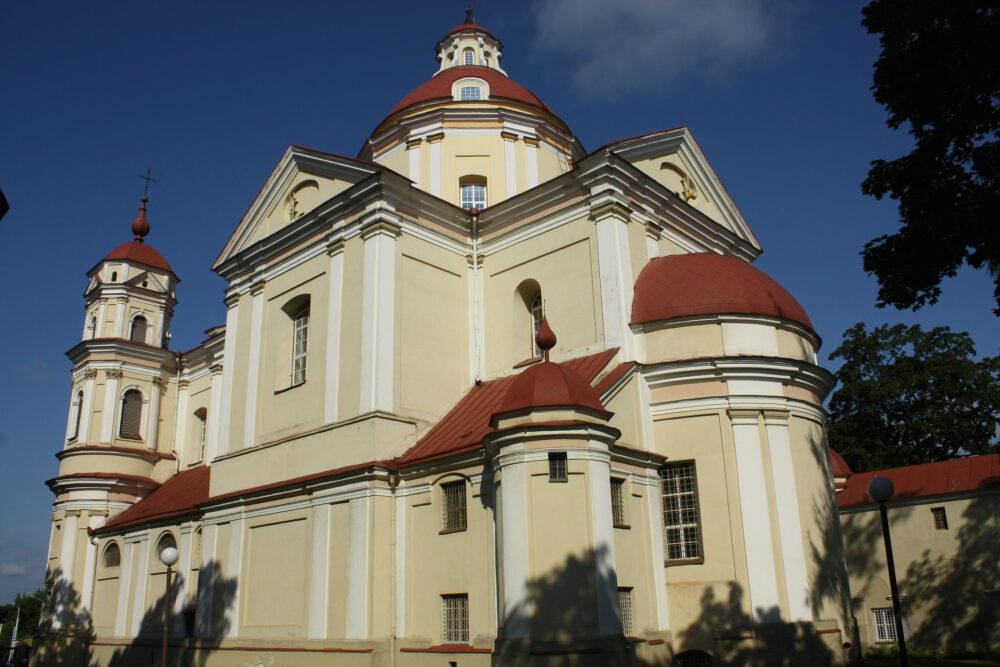
The Church of St. Peter and St. Paul is a true gem of Baroque architecture in Vilnius, renowned for its extravagant interior adorned with intricate stucco decorations and over 2,000 stunning plaster figures. Built in the 17th century by the Jesuits, the church stands as a masterpiece of the Vilnius Baroque school, showcasing the talents of renowned sculptors and artisans of the time. As you step inside, you’ll be greeted by a kaleidoscope of colours and shapes, with every surface adorned with ornate designs and religious motifs. Highlights include the intricate stucco work by Giovanni Pietro Perti and the impressive altar featuring a depiction of the Crucifixion by Martynas Stankus. Visitors are often left in awe of the church’s opulent beauty, which offers a glimpse into Vilnius’ rich artistic and religious heritage.
When visiting the Church of St. Peter and St. Paul, be mindful of its opening hours, as it may be closed to visitors during religious services and events. Photography may be restricted inside the church, so be sure to check with staff before taking any photos. Consider joining a guided tour to learn more about the church’s history and significance, or explore at your own pace using informational materials available on-site.
KGB Museum
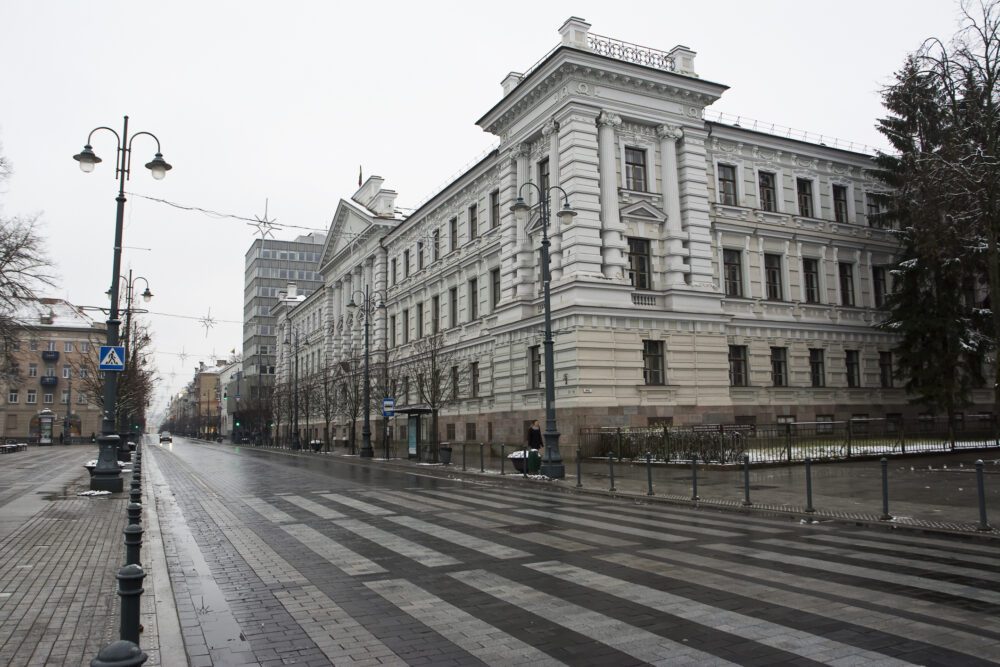
Perched atop Gediminas Avenue in the heart of Vilnius, the KGB Museum stands as a solemn reminder of Lithuania’s tumultuous past under Soviet occupation. Housed within the former headquarters of the KGB, the museum offers a chilling glimpse into the dark days of repression and surveillance that characterized the Soviet era. Visitors can explore the museum’s stark corridors and interrogation rooms, where prisoners were subjected to interrogation, torture, and imprisonment for daring to oppose the regime. Artifacts such as spy cameras, eavesdropping devices, and prison uniforms serve as haunting reminders of the KGB’s pervasive presence in the daily lives of Lithuanians during this period.
Prepare yourself for a sobering and emotionally intense experience when visiting the KGB Museum. It’s advisable to allocate ample time for your visit to fully absorb the exhibits and reflect on their significance. Consider joining a guided tour led by knowledgeable staff who can provide context and insights into the museum’s exhibits and the broader historical context of Soviet occupation in Lithuania. Keep in mind that photography may be restricted in certain areas of the museum, so be sure to respect any guidelines provided by museum staff. After your visit, take some time to decompress and reflect on your experience, perhaps by taking a leisurely stroll through nearby Vingis Park or enjoying a meal at one of the city’s many restaurants.
Lukiškės Prison
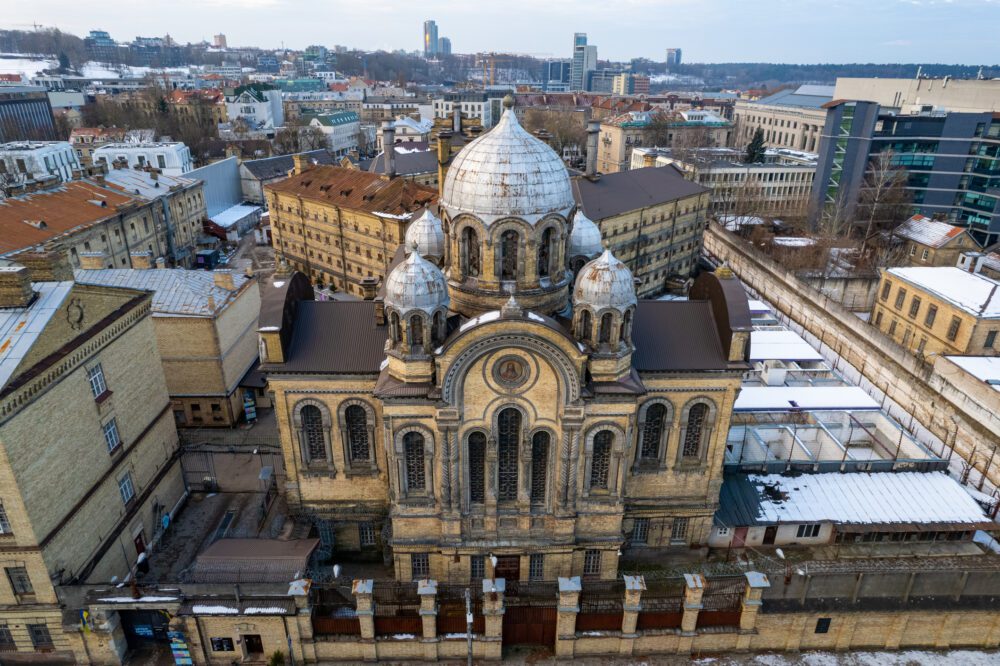
Lukiškės Prison, situated in the heart of Vilnius, carries a heavy legacy as a site of incarceration and oppression throughout Lithuania’s history. Originally built in the late 19th century by Tsarist Russia, the prison served as a place of detention for political prisoners, dissidents, and criminals alike. During the Soviet era, Lukiškės became notorious for its role in suppressing dissent and enforcing the will of the Communist regime, with countless individuals subjected to imprisonment, interrogation, and even execution within its walls. Today, the prison stands as a sombre reminder of Lithuania’s tumultuous past, offering visitors a glimpse into the harsh realities faced by those who dared to oppose tyranny and fight for freedom.
Visiting Lukiškės Prison can be a sobering and emotionally intense experience, so it’s important to approach it with sensitivity and respect for the lives lost and the suffering endured within its walls. Consider joining a guided tour to gain insights into the prison’s history and significance, as well as the stories of those who were imprisoned there. Be aware that parts of the prison may be off-limits to visitors or require special permission to access, so be sure to check with staff before exploring. After your visit, take some time to reflect on your experience and pay tribute to the victims of oppression, perhaps by lighting a candle at nearby Vilnius Cathedral or participating in a moment of silence in their honour.
Vilnius TV Tower
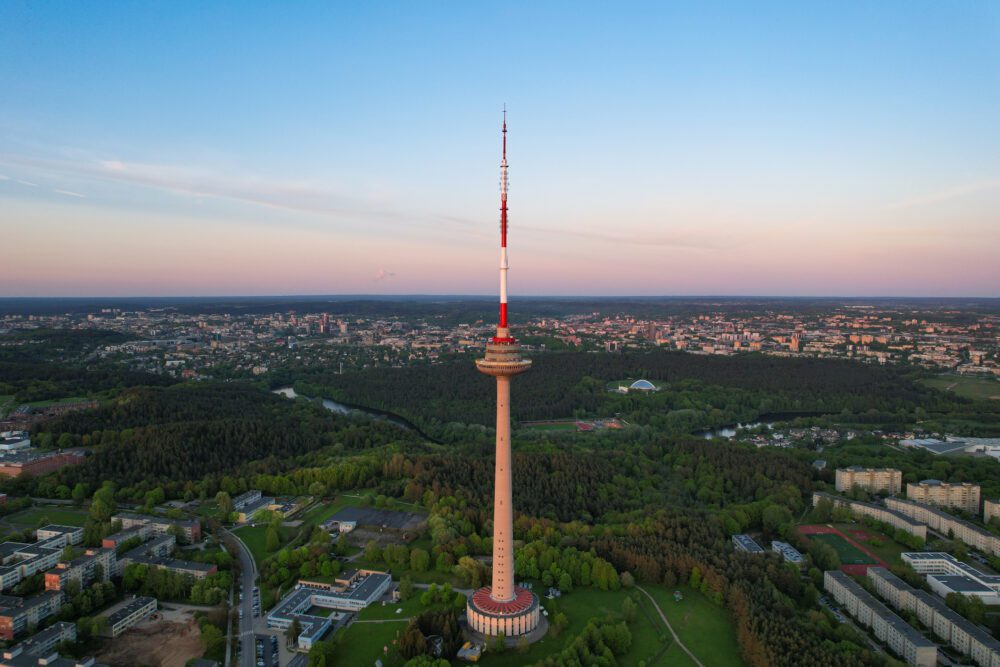
The Vilnius TV Tower stands tall as a symbol of Lithuania’s resilience and determination to break free from the shackles of Soviet oppression. Completed in 1980, the tower was intended to showcase the technological prowess of the Soviet Union and assert its dominance over the Lithuanian people. However, it would become a focal point of resistance during the tumultuous events of January 1991, when Lithuanians gathered to defend their newly regained independence from Soviet forces. Tragically, the tower became a site of violence and bloodshed, with 14 unarmed civilians losing their lives in the struggle for freedom. Today, the Vilnius TV Tower stands as a monument to those who made the ultimate sacrifice in the fight for liberty, and a beacon of hope for a brighter future.
When visiting the Vilnius TV Tower, consider taking the elevator to the observation deck for panoramic views of the city and its surroundings. Be sure to check the tower’s opening hours and any special events or exhibitions that may be taking place during your visit. If you’re feeling adventurous, you can even try your hand at bungee jumping from the tower’s platform, an exhilarating experience that offers a unique perspective on Vilnius from above. After your visit, take some time to explore the surrounding area, where you’ll find parks, cafes, and cultural attractions waiting to be discovered.
Day Trip to Trakai Castle
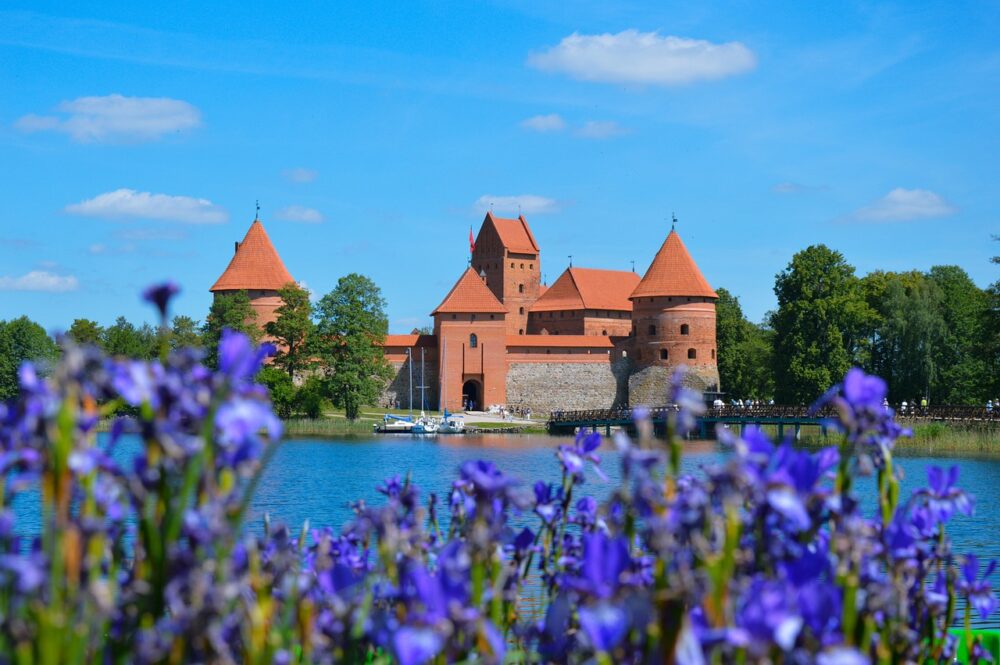
Embark on a journey back in time with a day trip to Trakai Castle, a picturesque fortress nestled amidst the serene beauty of Lake Galvė. Dating back to the 14th century, Trakai Castle served as the residence of the Grand Dukes of Lithuania and played a crucial role in the defence of the Grand Duchy against invasions from neighbouring powers. Today, the castle stands as a stunning example of Gothic architecture, with its red-brick walls and turrets rising majestically from the tranquil waters of the lake. Visitors can explore the castle’s interior, which houses a museum showcasing artefacts and exhibits related to the history of the Grand Duchy and the life of its rulers. Don’t miss the chance to stroll through the castle’s courtyards and gardens, where you’ll find breathtaking views of the surrounding landscape and plenty of photo opportunities.
Practical tip: When planning your day trip to Trakai Castle, consider taking a guided tour to learn more about the castle’s history and significance. Be sure to check the castle’s opening hours and any special events or exhibitions that may be taking place during your visit. Consider arriving early in the morning to beat the crowds and enjoy the castle’s tranquil ambience before it gets busy. After exploring the castle, take some time to wander through the charming town of Trakai, where you’ll find quaint shops, cafes, and restaurants serving up traditional Lithuanian cuisine. For a truly unforgettable experience, consider taking a boat ride on Lake Galvė to admire the castle from the water and soak in the natural beauty of the surrounding area.
Conclusion
Vilnius is a charming city with plenty of things to see and do. Whether you’re interested in history, culture, or nightlife, there’s something for everyone. From exploring the old town and its numerous churches and museums to trying local dishes at traditional restaurants or enjoying the vibrant music scene, there are endless possibilities.
Vilnius is an authentic European destination that offers a unique blend of tradition and modernity. With its friendly locals, affordable prices, and rich cultural heritage – it’s no wonder this hidden gem has become increasingly popular among travellers seeking off-the-beaten-path experiences.
